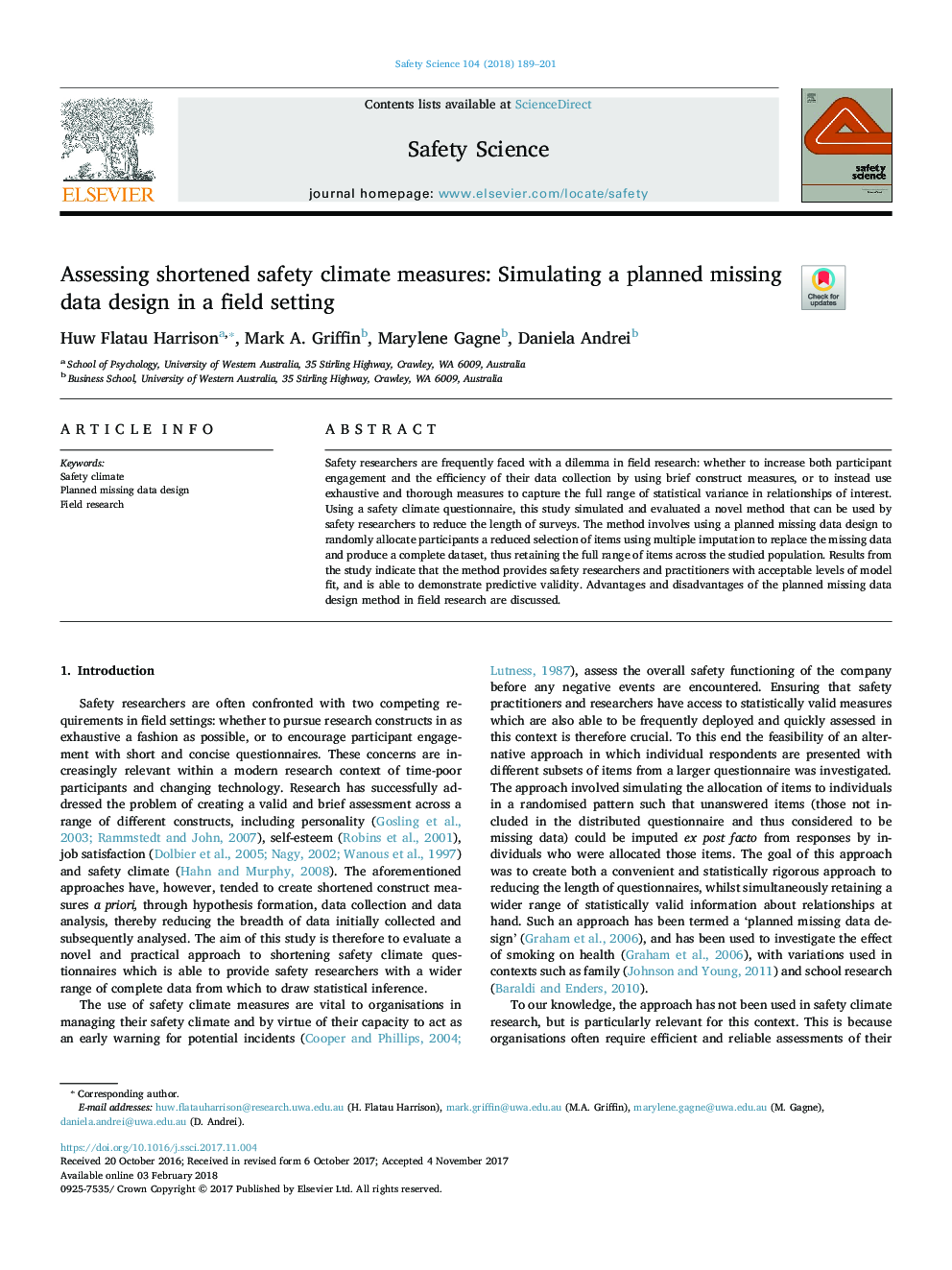| Article ID | Journal | Published Year | Pages | File Type |
|---|---|---|---|---|
| 6975038 | Safety Science | 2018 | 13 Pages |
Abstract
Safety researchers are frequently faced with a dilemma in field research: whether to increase both participant engagement and the efficiency of their data collection by using brief construct measures, or to instead use exhaustive and thorough measures to capture the full range of statistical variance in relationships of interest. Using a safety climate questionnaire, this study simulated and evaluated a novel method that can be used by safety researchers to reduce the length of surveys. The method involves using a planned missing data design to randomly allocate participants a reduced selection of items using multiple imputation to replace the missing data and produce a complete dataset, thus retaining the full range of items across the studied population. Results from the study indicate that the method provides safety researchers and practitioners with acceptable levels of model fit, and is able to demonstrate predictive validity. Advantages and disadvantages of the planned missing data design method in field research are discussed.
Keywords
Related Topics
Physical Sciences and Engineering
Chemical Engineering
Chemical Health and Safety
Authors
Huw Flatau Harrison, Mark A. Griffin, Marylene Gagne, Daniela Andrei,
